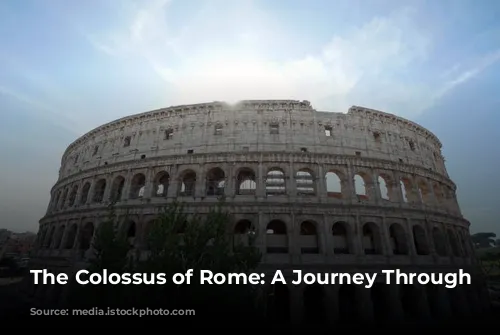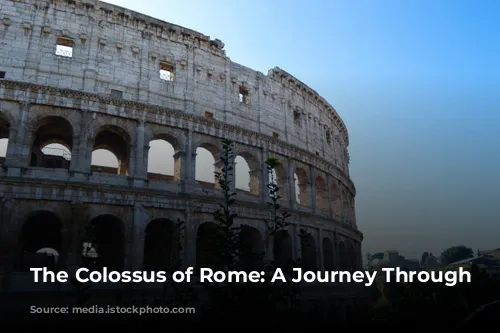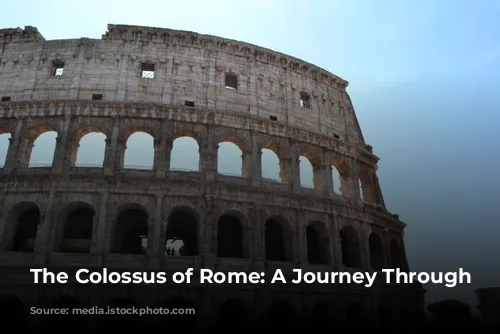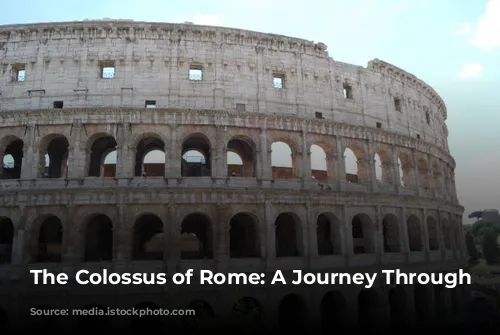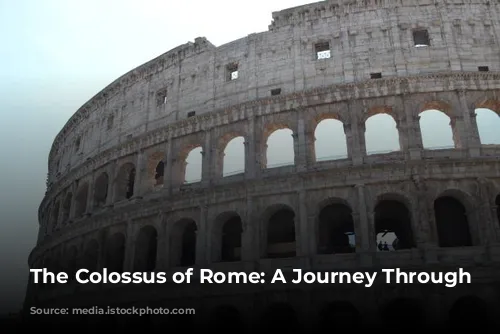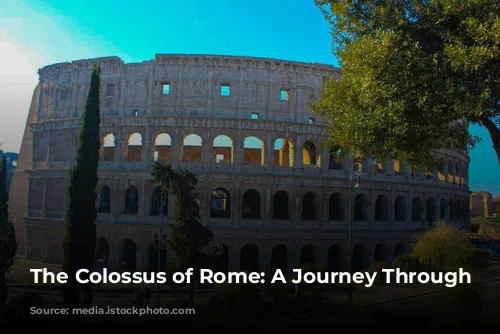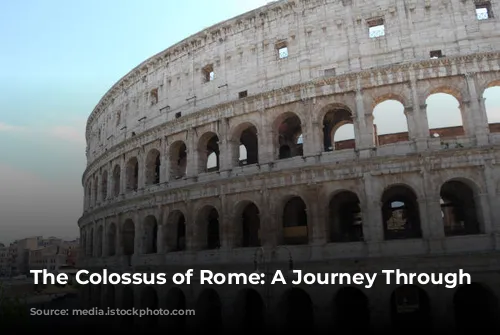The Colosseum, a name whispered with awe across the globe, is not just a monument; it’s a time capsule, echoing the grandeur and brutality of ancient Rome. This majestic amphitheatre, once known as the Flavian Amphitheatre, stands as a testament to the engineering prowess of the Roman Empire.
Emperor Vespasian, the founder of the Flavian dynasty, initiated construction of this colossal structure, which was later inaugurated by his son, Titus, in 80 AD. The opening ceremony was a spectacle unlike any other, a hundred-day extravaganza filled with gladiatorial combat, animal hunts, and even elaborate sea battles.
The Birth of a Legend
The Colosseum is not a name bestowed by the Romans. It originated in the Middle Ages, possibly referencing the colossal statue of Nero, the “Colossus,” that once stood nearby. It’s a name that resonates with a prophecy attributed to the Venerable Bede: “Rome will exist as long as the Colosseum does; when the Colosseum falls so will Rome; when Rome falls so will the world”.
This prophecy, although likely apocryphal, underlines the deep symbolic significance of the Colosseum. It’s not just a building; it’s a reflection of Rome’s power and its ultimate fate.
Engineering Marvels: A Symphony of Stone and Arches
The Colosseum is an architectural marvel, a breathtaking symphony of stone and arches. The Romans, masters of arches, used this technique to distribute the weight of the massive structure, ensuring its stability. Imagine it in its pristine state, gleaming white under the Roman sun, its four levels adorned with eighty arches each.
The Colosseum is not just an amphitheatre; it’s a symbol of Roman engineering ingenuity. The very design of the structure, with its elliptical shape, was carefully calculated to maximize seating capacity.
From Arena to Quarry: A Legacy of Reinvention
The Colosseum has seen more than its share of transformations. From a stage for gladiatorial combat to a quarry for marble, lead, and iron, its fate mirrored the ebb and flow of history.
The grandeur of the Colosseum was not spared the ravages of time. During the Middle Ages, the once-imposing structure was stripped of its materials to build other structures, including Barberini Palace, Piazza Venezia, and even St. Peter’s Basilica.
This plundering left the Colosseum a mere skeleton of its former glory, a testament to the relentless cycle of destruction and renewal that shapes our world.
A Glimpse into Roman Society: The Power of Spectacle
The Colosseum was more than just an arena; it was a reflection of Roman society, a microcosm of their values and hierarchies.
The amphitheatre could accommodate up to seventy thousand spectators, each assigned a seat based on their social standing. The wealthy occupied the lower tiers, while the commoners found their place in the upper sections. The Colosseum was a stage for the Roman elite to display their power and to showcase their lavish lifestyle.
The Gladiatorial Games: Blood and Spectacle
The Colosseum is synonymous with gladiators, those brave warriors who faced death in the arena. Their battles were not just a form of entertainment; they were a ritual, a display of bravery and skill.
The gladiators entered the arena through secret tunnels, emerging in a flurry of dust, adding to the spectacle. Their battles were a mix of skill and brutality, with the audience eagerly anticipating the outcome. The emperor, enthroned in his box, held the power of life and death over these valiant fighters.
A Mirror to Our Times: The Enduring Fascination of Violence
The Colosseum and the gladiatorial games remind us of the enduring human fascination with violence, a fascination that transcends time and culture. The brutality of the arena may seem barbaric to us, but it reflects a primal instinct, a need for spectacle and excitement.
Even today, we are drawn to forms of entertainment that involve violence and danger, be it in movies, video games, or even some forms of sports.
The Colosseum: A Monument of the Past, a Lesson for the Future
The Colosseum stands as a powerful reminder of the fleeting nature of power and the enduring legacy of human ambition. It is a symbol of the rise and fall of empires, a testament to the cyclical nature of history.
This monumental structure has not only endured the passage of time but also evolved with it. From a site of gladiatorial combat to a quarry for building materials, the Colosseum has been reborn time and again. Today, it stands as a beacon of history, attracting millions of visitors who come to witness its grandeur and to reflect on the past.
The Colosseum reminds us that history is not just a collection of facts and dates; it is a living, breathing entity that continues to shape our present and our future.
